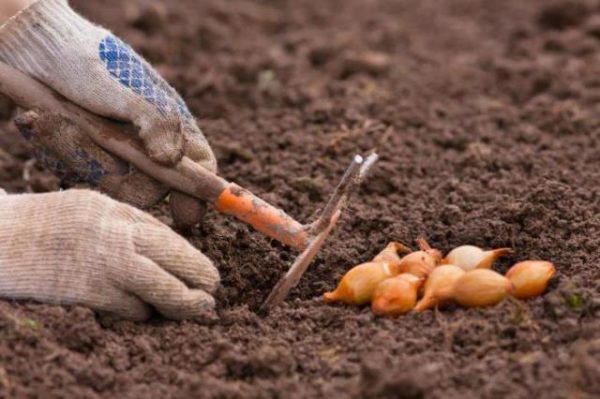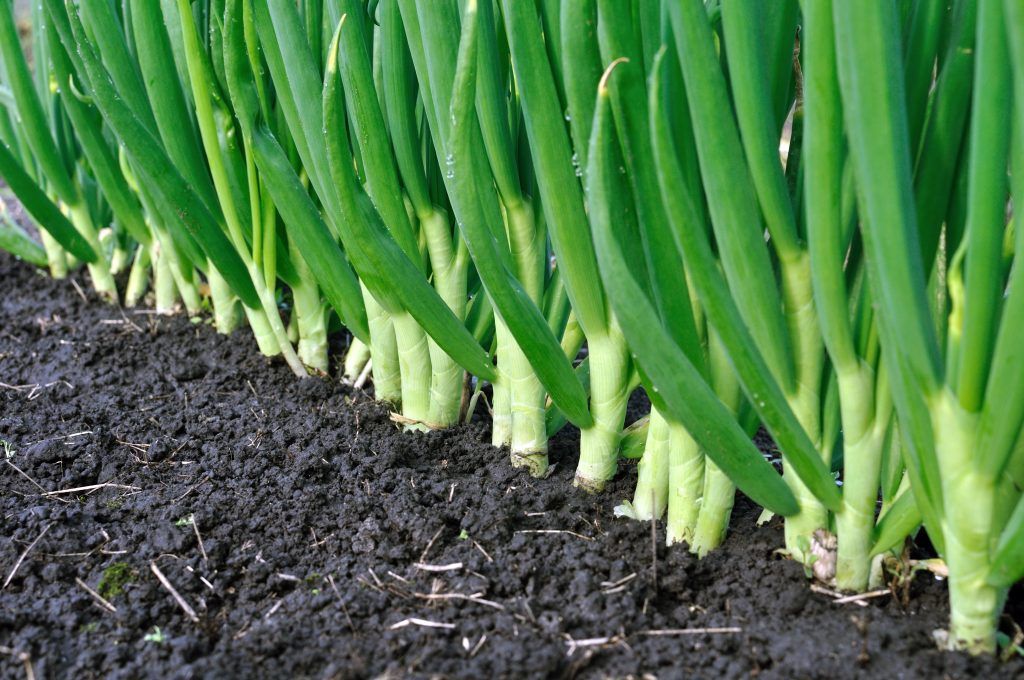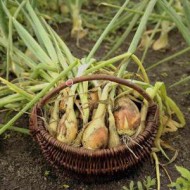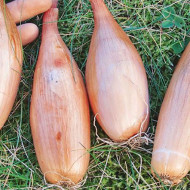Advantages of the Bamberger onion and the peculiarities of its cultivation
Content
Description of Bamberger onion
The bulbs are elongated and elongated, reaching 10 cm. The outer cover is represented by yellowish-brown scales, and the inner part is white, juicy and sweet. The flavor profile puts Bamberger onions on a par with salad varieties (such as shallots and red onions).

Advantages and disadvantages of the variety
- bountiful harvest;
- undemanding care;
- resistance to diseases and pests;
- lack of shooting;
- versatility of application;
- long shelf life.
- the only drawback is the high cost of sevka.
Video "Preparing the Bamberger bow for planting"
By watching this video, you will know how to plant onion sets in open ground.
Agricultural technology of Bamberger onions
The popular variety has a number of agricultural features, including several planting options. He is considered unpretentious in care, but it is worth following the classic agrotechnical rules. In gratitude, you will receive a healthy, bountiful harvest.
Preparation of planting material
There are two options for growing Bamberger onions: planting sets or sowing seeds. Each method has its own preparatory features. In the first case, the acquired planting material is first dried in a room with a temperature of 15-18 ° C. 24 hours before planting, the seedlings are kept at a temperature of 35 ° C. 30 minutes before planting in open ground, the planting material is disinfected with a 1% solution of potassium permanganate.
If the method of sowing seeds is chosen, then the purchased material is checked for suitability (integrity of the shell). After that, treatment is carried out in a growth stimulator "Zircon" or "Epin", which is diluted in a ratio of 5 liters of water to 5 ml of the substance. After 30 minutes of soaking, the seeds are ready for sowing.
Landing features
Regardless of the selected planting method (seeds or sevkom), the bed is preliminarily prepared. The selected place should be black earth or sandy loam, with good lighting and deep underground sources. The beds must be protected from strong winds and drafts.
The selected bed is dug up, freed from weeds and leveled. Depending on the type of soil, a variety of fertilizers are added:
- Loamy. Humus (3-4 kg) and urea (1 tsp) are added per 1 m2.
- Clay. Requires an equal amount of peat and humus with the addition of urea (1 tsp) and superphosphate (1 tbsp).
- Peat. Enriched with humus and compost, as well as nitrophosphate and superphosphate (1 tsp each).

Sometimes sevka planting is carried out before winter. In this case, the smallest bulbs are selected. The landing is carried out 20 days before the onset of frost, which is rather difficult to predict due to the changeable climate. In the selected area, grooves are made with a depth of 3-4 cm, and the distance between them is observed at 20-30 cm. The sowing is planted with an interval of 8-10 cm, covered with soil and mulched.
When sowing seeds, furrows are prepared with a depth of 5-7 cm and watered abundantly with water. The distance between the rows is maintained at 15 cm. Before sowing, rotted manure (50 g) and superphosphate (10 g) are placed on the bottom of the furrow. Then the seeds are sown to a depth of 2-3 cm (3 g per 1 m2). The finished rows fall asleep and lightly compact the earth.
Spring planting requires making grooves 3-4 cm deep with a row spacing of 20-30 cm. The planted bulbs are sprinkled with earth, abundantly moistened and mulched with straw, hay or leaves.
Care advice
It is the unpretentiousness of the variety, according to gardeners, that increases its ratings in the market. Even beginners can grow the crop. The main thing to pay attention to is proper watering. After planting, the beds are watered every three days, unless it rains. With the onset of July, the soil is moistened no more than 3 times a month. Loosening is carried out the next day after watering (once every 30 days), while weeds are removed.
Watering is completely stopped 20 days before harvesting so that the bulbs can ripen.
Planting care includes three stages of fertilization:
- on the 15th day, a solution of chicken manure is introduced with the calculation of 10 liters per 1 m2 of land;
- after 21 days, nitrogen fertilizers are applied (2 tablespoons of urea per 10 liters of water);
- after 3 weeks, the soil is spilled with potash dressings (10 liters of water per 2 tablespoons of superphosphate).

Diseases and pests of the variety
Bamberger onions are disease resistant. For preventive purposes, the beds are sprayed with copper sulfate once. The procedure is carried out with a feather length of 20 cm.
Collection, storage and use of the crop
The readiness of the landings is determined by the state of the feather - it should lie down. At this point, the onions are carefully poured in with a pitchfork and pulled out by hand. The harvested crop is sent to dry in a warm place (20-30 ° C) or scattered directly under the sun. After drying, the root system of the bulbs must be cut off.
The crop is stored in wooden crates, wicker baskets or mesh bags. They are placed not only in basements with a temperature of 3-10 ° C, but also on insulated loggias. Due to their taste, onions are used for fresh salads, as well as for any dishes.
- Collect the bow when the feather "lies"
- Before sending for storage, the crop must be dried.
- Store the crop in mesh bags
Reviews of gardeners
“I got sevok on a tip from my friends. I was pleasantly surprised by the undemanding onion in the growing process and the good harvest. "
"Ideal for cooking, easy to cut and tear-free."
Bamberger onions have a special place in the hearts of Russian gardeners. Due to its high taste, it is versatile in use, and is also suitable for growing in areas with difficult climatic conditions.



